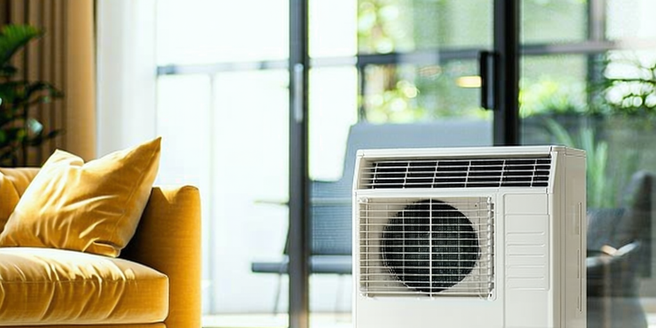
The Evolution of Cooling Systems in Recent Decades
Cooling systems have evolved significantly over the past few decades, transforming from basic fans to sophisticated air conditioning units. In the early days, the primary focus was on providing basic thermal comfort, with electric fans being the most common solution. However, as technology advanced, so too did our methods of cooling. The 1950s saw the introduction of residential air conditioning, which quickly gained popularity. The systems became more efficient over time, thanks to advancements in compressor technology and the use of energy-efficient refrigerants. This progression has led to today’s highly efficient cooling systems, which are not only more effective but also environmentally friendly, addressing both comfort and sustainability. The continuing evolution of cooling technology promises even greater advancements, with an emphasis on eco-friendliness and energy efficiency.
How Smart Technology is Revolutionizing Air Conditioning
Smart technology is revolutionizing air conditioning by integrating advanced features that enhance user experience and improve energy efficiency. Contemporary air conditioners are now equipped with sensors and IoT capabilities, enabling them to be controlled remotely via smartphones or voice commands. This allows for personalized climate settings and the ability to adjust temperatures based on occupancy or user preferences. Furthermore, smart systems utilize data analytics to optimize performance, leading to reduced energy consumption and lower electricity bills. Some units can even learn from user behaviors, automatically adjusting settings to create the ideal environment. As integration with smart home ecosystems grows, these air conditioners will continue to evolve, providing seamless connectivity and efficiency. This technological advancement not only makes life more convenient but also contributes to reducing the overall carbon footprint.
Eco-Friendly Cooling Solutions for a Sustainable Future
As concerns about climate change intensify, the demand for eco-friendly cooling solutions is on the rise. Traditional air conditioning systems contribute significantly to greenhouse gas emissions and energy consumption. In response, the development of sustainable cooling technologies is gaining momentum. Innovations such as evaporative coolers, solar-powered air conditioners, and geothermal cooling systems are emerging as viable alternatives. These solutions not only reduce environmental impact but also offer energy savings. Additionally, advancements in materials science have led to the creation of phase-change materials that absorb and release heat efficiently, providing passive cooling benefits. The adoption of such technologies is crucial in achieving sustainability goals, as they reduce dependency on fossil fuels and mitigate the effects of urban heat islands. As the world moves towards a sustainable future, eco-friendly cooling is essential.
Innovations in Liquid Cooling for Electronics
With electronics becoming more powerful and compact, effective cooling solutions are vital to maintain performance and prevent overheating. Liquid cooling has emerged as a superior method compared to traditional air cooling systems, offering enhanced thermal management. This technology involves circulating a coolant through pipes or channels in direct contact with heat-generating components, efficiently dissipating heat. Recent innovations have enhanced the efficiency and accessibility of liquid cooling, making it a practical option for consumer electronics, including laptops and gaming consoles. Additionally, advancements in microfluidics have enabled the development of miniaturized liquid cooling systems that are integrated at the chip level, providing highly efficient thermal management. As electronics continue to evolve and demand for high-performance devices increases, liquid cooling will play an integral role in ensuring optimal functionality and longevity.
The Role of Artificial Intelligence in Climate Control
Artificial Intelligence (AI) is playing a transformative role in climate control and air conditioning systems. By analyzing vast amounts of data from sensors and user preferences, AI algorithms can optimize the operation of HVAC systems in real-time. This leads to improved energy efficiency, cost savings, and enhanced comfort for occupants. AI-driven systems can anticipate changes in weather conditions, automatically adjusting settings to maintain ideal indoor climates. Furthermore, predictive maintenance powered by AI can detect potential system failures before they occur, reducing downtime and costly repairs. The integration of AI in climate control not only makes these systems smarter and more intuitive but also aligns with global efforts to reduce energy consumption. As AI technology continues to evolve, its application in climate control is expected to expand, offering innovative solutions for both residential and commercial environments.
Future Trends in Personal Cooling Devices
The market for personal cooling devices is rapidly evolving, driven by the quest for comfort and the impacts of climate change. Innovations in wearable cooling devices are at the forefront, offering personalized climate control for individuals on the go. These gadgets range from cooling vests and neck fans to portable air conditioners that can be worn or carried easily. Advances in battery technology and materials are enhancing the efficiency and utility of these devices, making them more accessible to consumers. Furthermore, the integration of smart technology allows for personalized and adaptive cooling, adjusting settings based on environmental conditions and user preferences. As urban populations grow and heatwaves become more frequent, the demand for personal cooling solutions is expected to rise. These trends indicate a shift towards tailored comfort solutions, addressing both practical and environmental needs.
